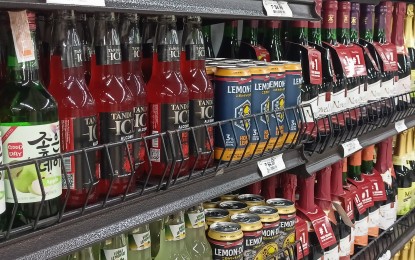
SLOWER INFLATION. Alcoholic beverages on display at a grocery shop in Tacloban City, Leyte in this undated photo. The March 2024 price statistics in Eastern Visayas reveal that alcoholic drinks and tobacco are main drivers of further deceleration of inflation in the region to 3.4% from February’s 3.7 % (PNA photo by Daniel Panis/OJT)
TACLOBAN CITY – Eastern Visayas recorded a 3.4 percent inflation rate in March, the region's slowest in six months and sixth among all regions, the Philippine Statistics Authority (PSA) reported Friday.
The previous slowest rate of price increase in the region was 4.9 percent in September 2023, while the February level was at 3.7 percent.
In a press briefing, PSA Eastern Visayas Director Wilma Perante traced the downward trend to the faster annual decrease in the housing, water, electricity, gas, and other fuels index at 3.2 percent in March 2024 from an annual decrease of 1.6 percent in February.
"The slower inflation rate in the indices of food and non-alcoholic beverages at 6.5 percent this month from 6.7 percent in February, and alcoholic beverages and tobacco at 6.7 percent from eight percent last month also contributed to this downtrend," she added.
Among the region’s six provinces, Samar posted the highest inflation in March at 4.3 percent, followed by Leyte, 3.7 percent; Biliran and Southern Leyte, both at 3.5 percent; Northern Samar, 2.5 percent; and Eastern Samar, 2.2 percent.
Contrary to common knowledge, Perante said low inflation does not necessarily mean that prices of commodities are decreasing.
Instead, it means that prices continue to increase but at a slower rate.
Data collection for the consumer price index is done by the PSA provincial twice monthly, except for petroleum products which they monitor every Friday. (PNA)
